
Innovations in Lifting and Setting Heavy Natural Stone in Hardscape Projects
Natural stone is one of the most beautiful and durable materials used in hardscape construction. Whether you’re installing stone slabs for a patio, large steps for a landscape feature, or heavy coping stones for retaining walls, the weight and irregular shapes of natural stone can present serious challenges on the job site. Fortunately, recent innovations in lifting and installation technology are transforming how contractors handle heavy stone, increasing safety, efficiency, and precision.
In this article, we’ll explore the top tools, equipment, and techniques that make lifting, moving, and setting heavy natural stone easier and smarter than ever before.
The Challenge of Handling Heavy Natural Stone
Trim products in hardscaping refer to finishing elements that define edges, create transitions, or provide acStone materials like granite, limestone, bluestone, and basalt can weigh hundreds of pounds per piece. Handling them manually is not only inefficient—it poses significant risks of injury and material damage. Traditional methods such as pry bars, straps, and brute force labor are still used, but the industry has evolved.
Common Problems When Moving Stone:
- Back and joint injuries
- Chipped or broken stone edges
- Uneven placement or settling
- Time-consuming setups
To address these issues, the hardscape industry has turned to specialized stone handling equipment and lifting technology.
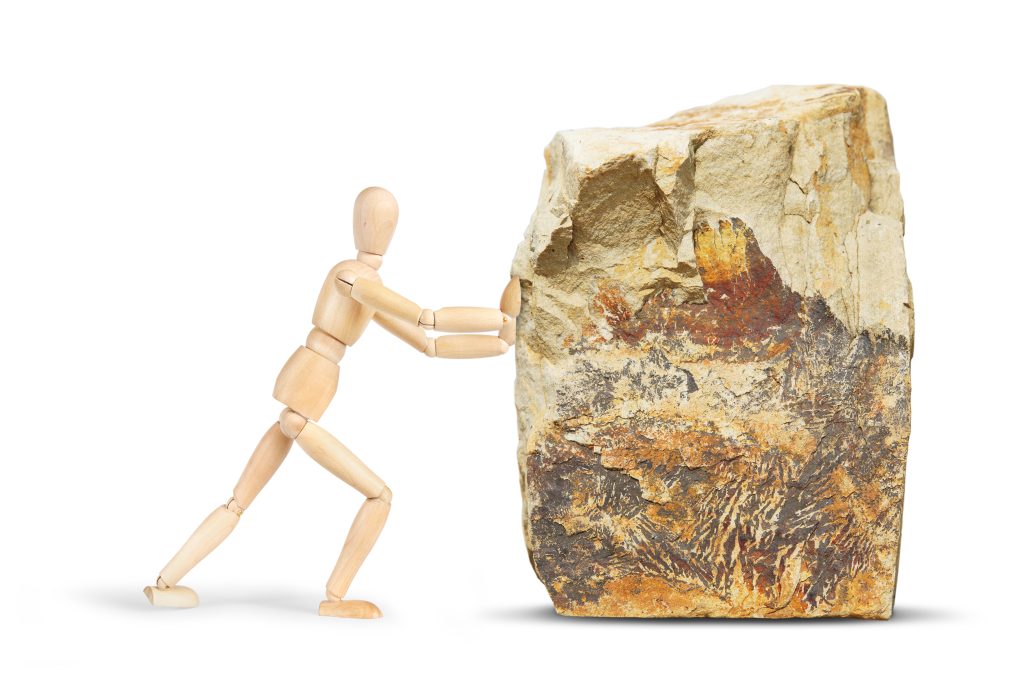

Top Tools and Technologies for Lifting and Setting Heavy Stone
While coping is often associated with pool edges, it plays a far broader role in landscape architecture. Natural stone coping can be used to cap retaining walls, edge raised patios, border garden beds, and finish stair treads. Wherever there’s a vertical edge or a transition between materials, coping brings both protection and polish.
1. Vacuum Lifting Systems
Vacuum lifters have become a game-changer in hardscaping. These systems use suction to securely grip the surface of the stone, allowing workers to lift and set large slabs or steps with minimal physical strain.
Benefits of Vacuum Lifters:
- Safe and secure grip on smooth or textured stone surfaces
- Reduce labor needs—one operator can often do the work of two or three
- Precision placement for alignment and leveling
- Battery-powered or hydraulic options for on-site flexibility
Popular brands include Pave Tech’s Quick-E-Vac, Kenco’s Stone Lift, and Probst SM vacuum lifters, all designed to lift slabs, coping, or large stone treads.ne wall, or transitioning between outdoor zones, coping is the element that brings structure and style.
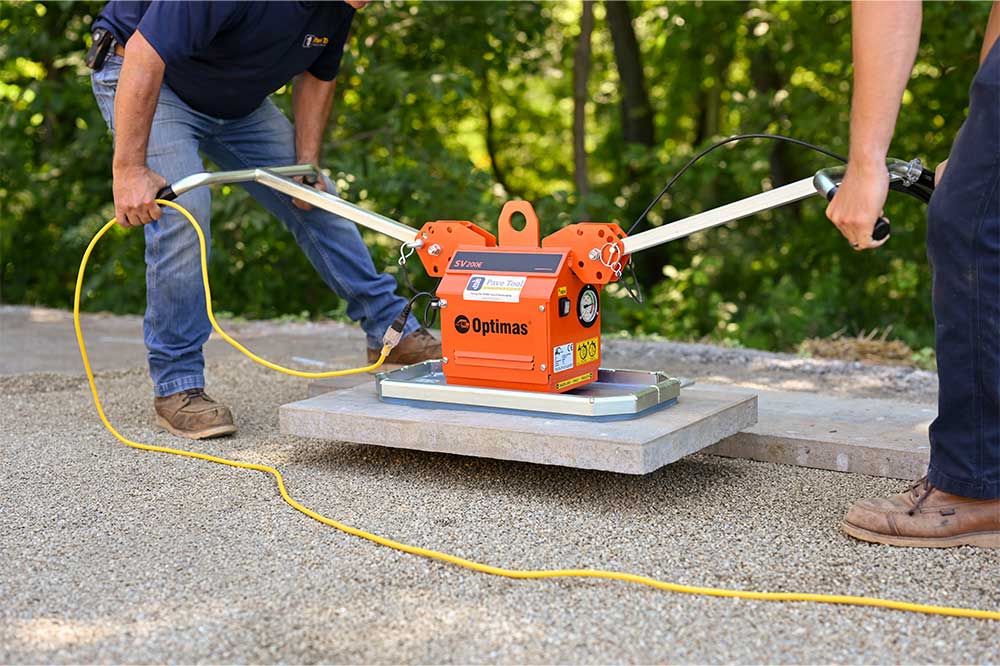


2. Stone Lifters and Grabs (Mechanical Clamps)
Mechanical stone clamps or slab lifters are ideal for rough or irregularly shaped natural stones. These tools grip stone with adjustable pressure and are commonly used with skid steers, mini-excavators, or cranes.
Common Uses:
- Moving step treads, retaining wall blocks, or irregular boulders
- Handling landscape stone without surface damage
- Working with materials that vacuum systems can’t lift due to porosity or rough texture
Clamps such as the Probst Stone Grab, Kenco Rocklift, and Vacuworx PHD system are industry favorites.


3. Dollies, Carts, and Slab Movers
For smaller or mid-sized stones, heavy-duty slab carts and multi-surface dollies offer ergonomic and time-saving solutions. These tools reduce the strain of transporting stone across job sites, especially in areas where heavy machinery can’t be used.
Features to Look For:
- Pneumatic or foam-filled tires for rough terrain
- Tilting platforms for easier stone unloading
- Load capacities ranging from 300 to 1,000+ lbs
Brands like Bon Tool, Pave Tool Innovators, and OX Tools offer specialized stone transport gear for pavers, slabs, and blocks.
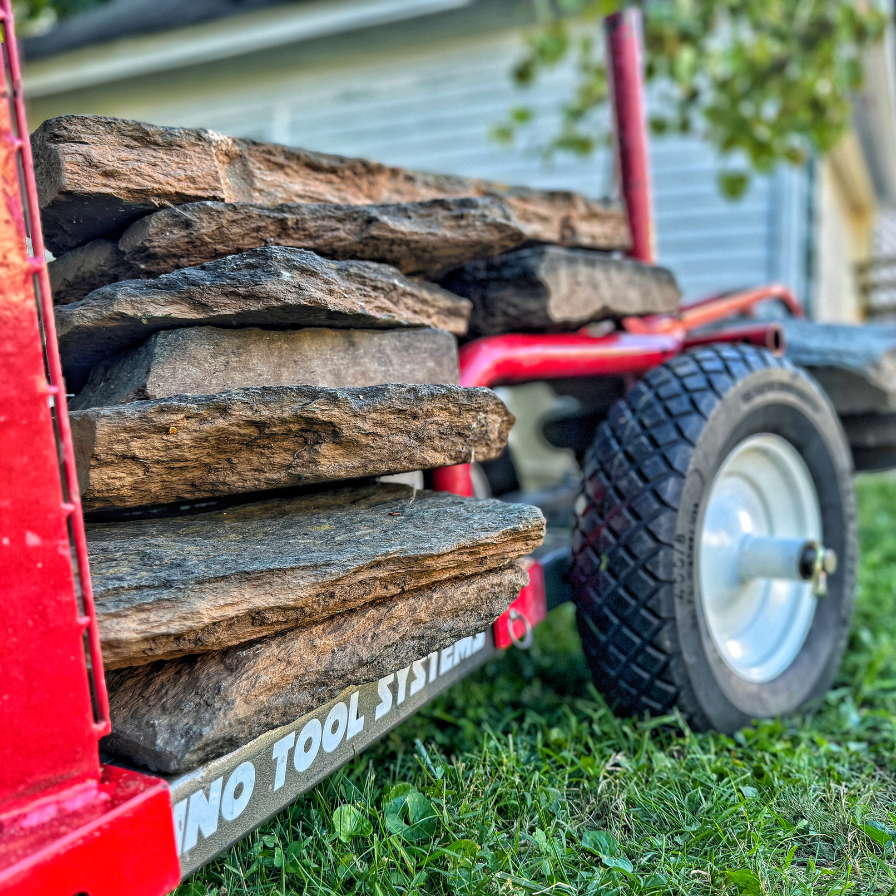
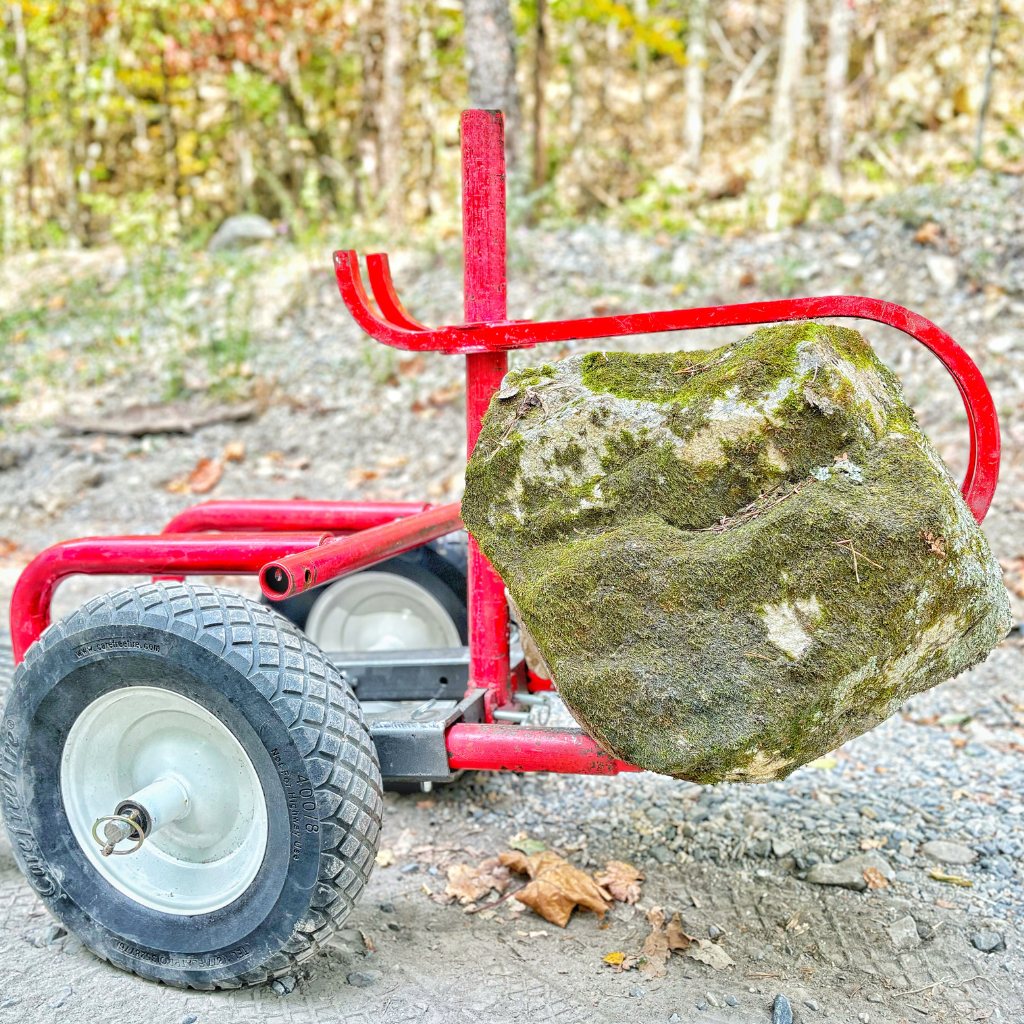
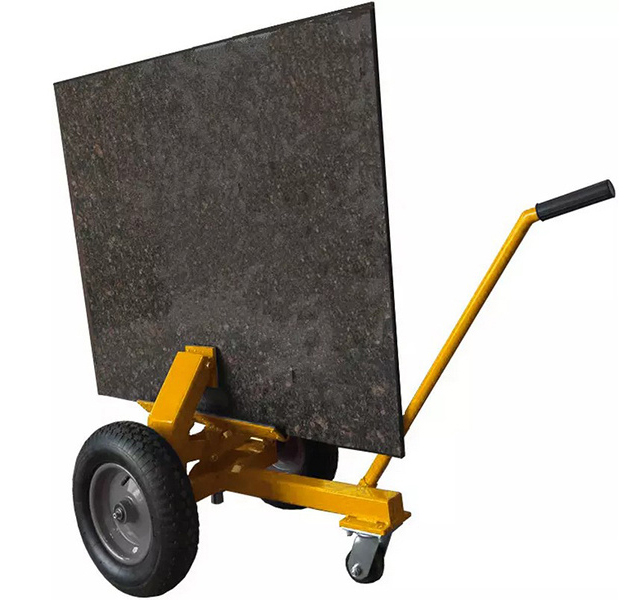
4. Skid Steers and Compact Track Loaders with Specialty Attachments
Modern skid steers and compact loaders can be outfitted with specialty stone lifting attachments, including vacuum pads, hydraulic clamps, and adjustable forks, making them one of the most versatile tools on site.
Advantages:
- Power and stability for large stone movement
- Compatibility with multiple lifting systems
- Maneuverability in tight or uneven outdoor spaces
This technology allows for precise placement of coping stones, steps, and caps without risking injury or material damage.


5. Setting and Leveling Tools for Accuracy
Once heavy stone is in place, precision setting tools help ensure the final position is level, secure, and visually aligned.
Examples Include:
- Quick-E-Laser for accurate height setting
- Leveling bars and paver aligners
- Vibrating plate compactors with rubber pads for gentle adjustment
Investing in setting tools can drastically improve the finish quality and durability of natural stone hardscapes.

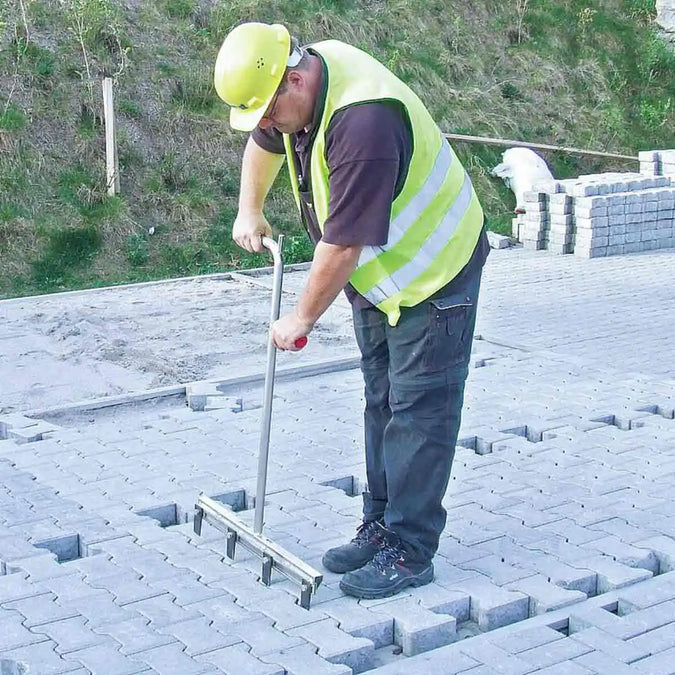
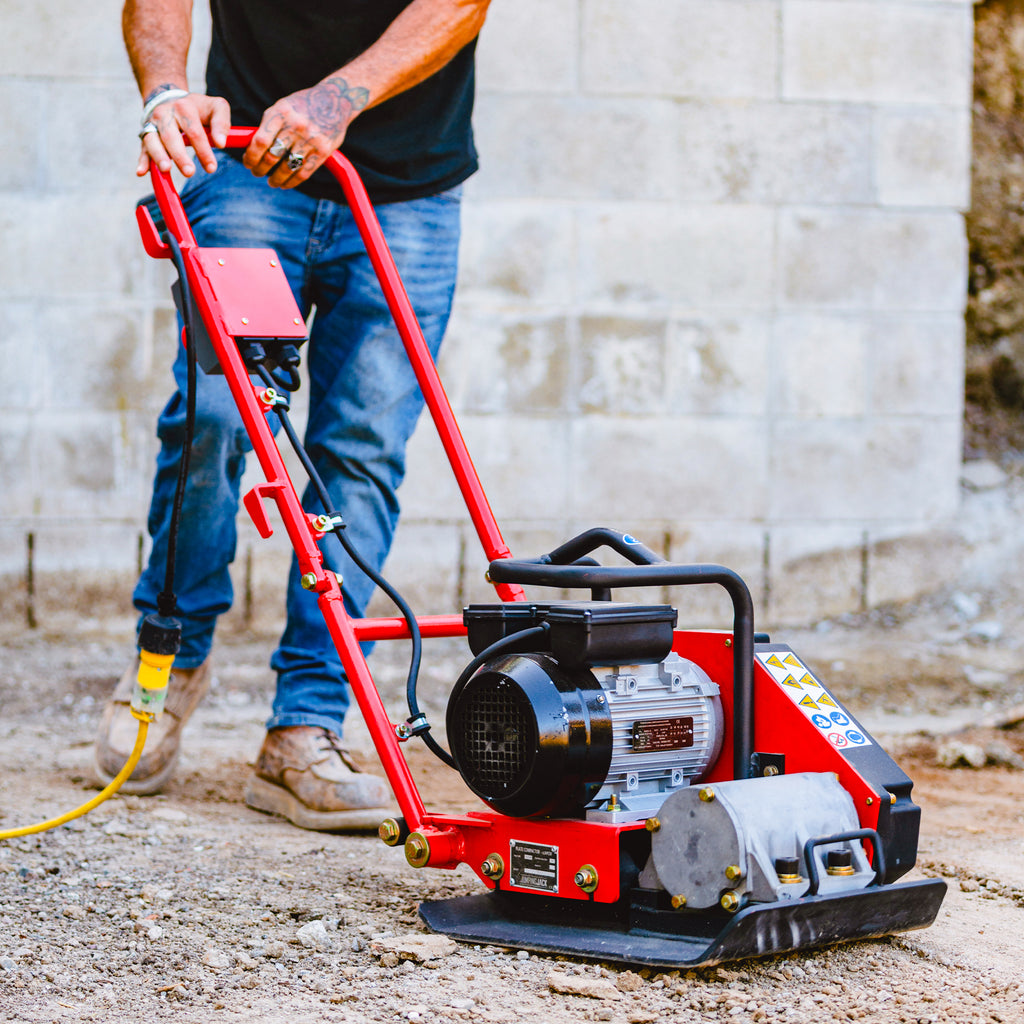
Smart Practices for Handling Heavy Natural Stone
Beyond equipment, using smart practices can further streamline your project:
- Pre-plan stone placement to reduce unnecessary handling
- Use protective pads or shims to prevent chipping
- Train your crew on proper lifting techniques and tool operation
- Choose the right tool for the stone’s shape, weight, and surface type
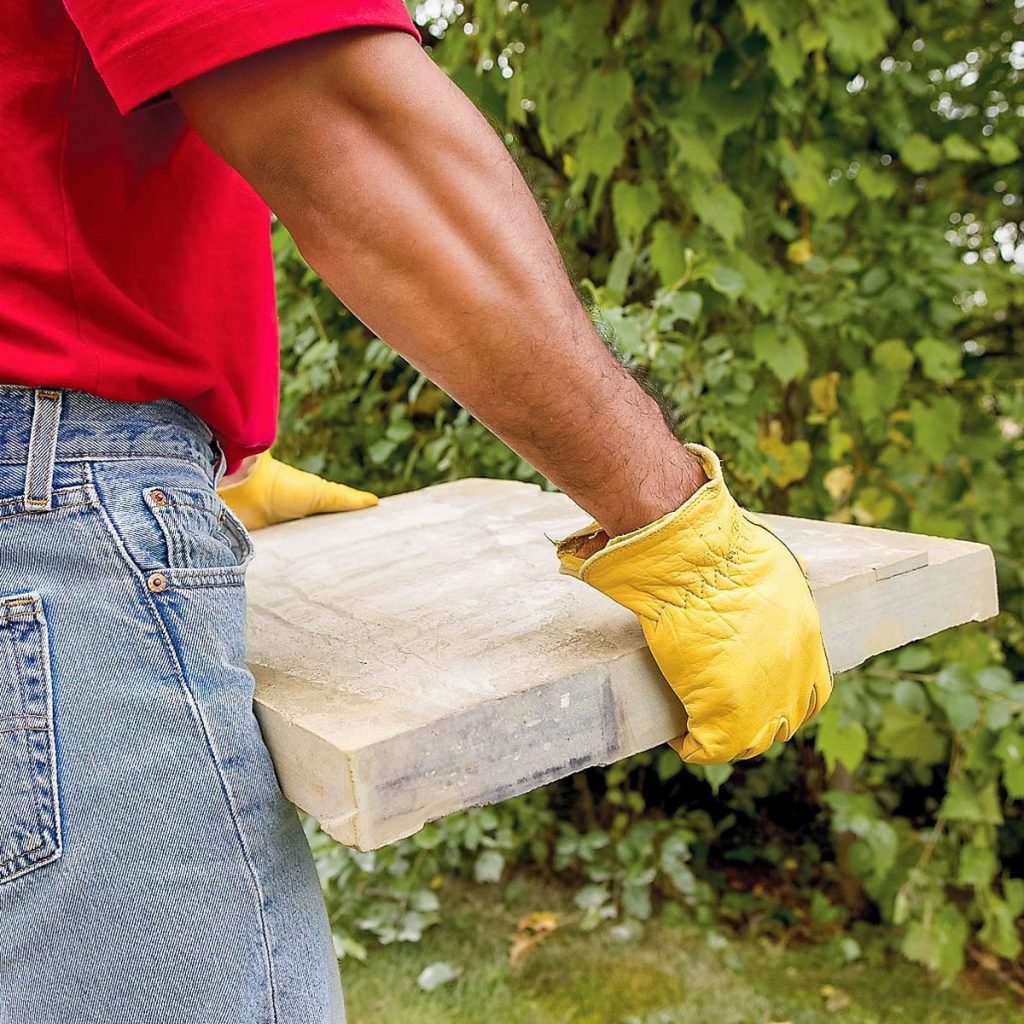

Final Thoughts: Work Smarter, Not Harder
As natural stone continues to grow in popularity for patios, walkways, outdoor kitchens, and retaining walls, the demand for efficient stone handling solutions grows with it. Embracing modern lifting tools like vacuum systems, mechanical grabs, and specialty carts not only protects your crew—it increases job site productivity and delivers better project outcomes.
Whether you’re a contractor, mason, or landscape designer, using the right technology to lift, move, and set heavy stone is no longer a luxury—it’s essential for safety, quality, and staying competitive in today’s market.